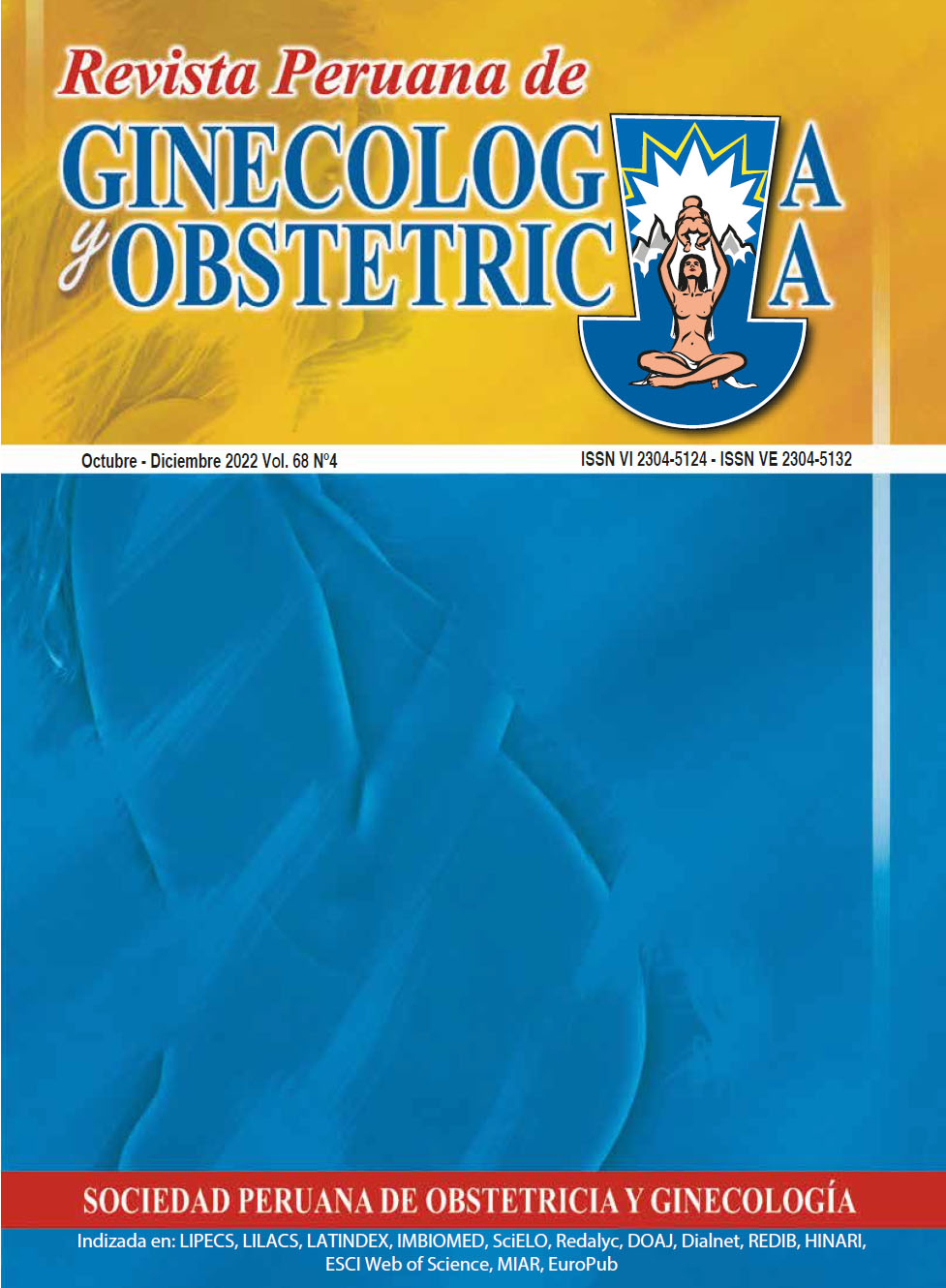Índice de rendimiento biventricular del corazón fetal
DOI:
https://doi.org/10.31403/rpgo.v68i2448Palabras clave:
Ecocardiografía fetal, Pruebas de función cardíaca fetal, Ultrasonografía, Ecocardiografía DopplerResumen
Objetivo. Proponer un índice de rendimiento biventricular basado en los valores promedio de la duración del ciclo cardíaco de cada uno de los ventrículos, determinar la variable incluida en el estudio con la correlación estadística más significativa, establecer valores de referencia que permitan identificar el trabajo de cada ventrículo en función de dicha variable y obtener un índice de gasto biventricular equilibrado. Metodología. Estudio prospectivo y transversal en fetos de 168 gestantes, en embarazos entre las 16 y 38 semanas sin patologías materno-fetales. Se obtuvieron ondas de velocidad de flujo de ambas válvulas atrioventriculares y el tiempo total del ciclo sístole-diástole se calculó en milisegundos para cada válvula. Se calcularon promedios, desviación estándar y puntuación Z del tiempo sistólico-diastólico para cada ventrículo y el índice de rendimiento ventricular individual dividiendo el valor obtenido entre la frecuencia cardiaca fetal. Se obtuvo el valor promedio de ambos y este, al ser dividido por la frecuencia cardíaca, permitió obtener el índice de rendimiento biventricular para establecer la correlación entre este, la frecuencia cardiaca fetal y la edad de gestación. Resultados. Se halló valores de tiempo sistólico-diastólico en milisegundos para el ventrículo derecho de 420,8 (DE ±28,3) y para el ventrículo izquierdo de 418,8 (DE ±26,3), sin diferencias estadísticamente significativas (p=0,371). La correlación con la frecuencia cardíaca fetal resultó negativa para ambos ventrículos (-0,491 y -0,553; p<0,05). El tiempo promedio biventricular fue de 418,37 ms (± 20,59) y la correlación con la edad gestacional de 0,48 (p<0,05); la correlación con la frecuencia cardiaca fetal fue negativa, -0,50 (p<0,05). El índice de rendimiento biventricular mostró valores de 2,8 (extremos 2,4 (P5) y 3,4 (P95)). La correlación entre el índice de rendimiento biventricular y la frecuencia cardiaca fetal fue 0,78 (p<0,05), de menor grado (0,27) con la edad gestacional. Conclusiones. Se demostró que los tiempos sistólico-diastólicos de cada ventrículo no difirieron entre sí y se correlacionaron de manera negativa con la frecuencia cardiaca fetal. Se comprobó que es posible evaluar el ciclo cardíaco fetal de cada ventrículo mediante el índice de rendimiento ventricular, así como calificar con el índice de rendimiento biventricular el gasto cardíaco combinado como equilibrado.
Descargas
Publicado
Cómo citar
Número
Sección
Licencia
Derechos de autor 2022 Alberto Sosa-Olavarría

Esta obra está bajo una licencia internacional Creative Commons Atribución 4.0.
Esta revista provee acceso libre inmediato a su contenido bajo el principio de que hacer disponible gratuitamente la investigación al publico, lo cual fomenta un mayor intercambio de conocimiento global.















